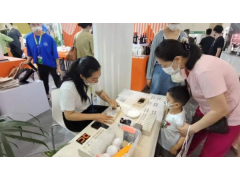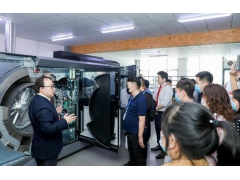On December 19, a research team led by Professor Keon Jae Lee of the Korea Advanced Institute of Science and Technology (KAIST) recently published an article in the journal Nature entitled "Application of micro-vacuum force technology for general selective transfer printing", in which the research team demonstrated that by selectively adjusting micro-vacuum force method, Achieve large volume transfer of micro inorganic semiconductor chips. It is reported that the Micro LED is the light source of the next generation of displays, using inorganic LED chips less than 100 μm in size, compared to traditional displays such as LCD, OLED and QD, Micro LED has attracted a lot of attention for its excellent electrical/optical characteristics, reliability and stability. However, due to the small size of Micro LED, it faces a series of production process problems such as massive transfer. In order to solve the problem of Micro LED chip transfer efficiency, Professor Keon Jae Lee's research team developed the Micro vacuum assisted selective transfer printing (μVAST) technology to transfer a large number of Micro LED chips by adjusting the micro vacuum suction.

Micro Vacuum Assisted Selective Transfer Printing (μVAST) technology (photo credit: Nature)
The key technology, μVAST, relies on a laser-induced etching (LIE) method, which can form a 20 micron microhole array with an aspect ratio at a manufacturing rate of up to 7,000 holes per second on a glass substrate. The drilled glass created by the LIE method will then be connected to the vacuum channel to selectively pick up and place the Micro LED by controlling the micro-vacuum force at the desired hole array. Compared with traditional transfer methods, micro-vacuum-assisted transfer printing technology achieves higher adhesion switchability and can efficiently transfer and assemble micro-semiconductors of various materials, sizes, shapes and thicknesses onto any substrate. According to Professor Keon Jae Lee, microvacuum-assisted transfer technology offers an interesting tool for large-scale, selective integration of tiny high-performance inorganic semiconductors. Professor Keon Jae Lee also revealed that at present, the team is studying the transfer printing of commercial Micro LED chips using an ejector system to achieve the manufacturing of Micro LED large-size TVS, flexible devices and wearable phototherapy patches. It is worth noting that in 2023, multiple research teams of the Korea Advanced Institute of Science and Technology have released a number of new research results in the field of Micro LED. For example, in March, the research team of Professor Yong-Hoon Cho of the Department of Physics at the Korea Advanced Institute of Science and Technology developed a core technology for manufacturing ultra-high-resolution LED displays, achieving 0.5 micron LED pixels, less than 1/100 the thickness of the average hair, through focused ion beams; In the same month, the research team of Professor Sang Hyeon Kim of the Department of Electrical and Electronic Engineering at the Korea Advanced Institute of Science and Technology constructed an epitaxial structure that is insensitive to side wall defects to solve the problem of reduced efficiency caused by miniaturization of Micro LED devices. (Compiled by LEDinside Irving)






